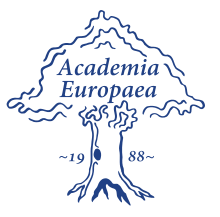Speaker
Description
The key physics phenomena which govern the behaviour of magnetically confined fusion plasmas in toroidal geometry have been the subject of intense research in recent decades. A detailed understanding of these high temperature, ‘collisionless’ plasmas must integrate the role of turbulent transport processes, magnetohydrodynamic stability, the interaction of high energy particles produced by fusion reactions with the thermal ‘background’ plasma, and the influence of ‘boundary conditions’ produced by interactions between the plasma and the material surfaces of the confinement vessel. Progress in advanced plasma measurement (‘diagnostic’) techniques and in the development of a sophisticated numerical simulation capability has revealed many elements of the physics determining the confinement and stability of such plasmas.
A magnetically confined plasma is a complex state in which there is significant free energy available that can generate turbulence, ‘small scale’ instabilities having characteristic length scales varying approximately over the range from the electron to the ion Larmor radius, i.e. typically ~10-4 to 10-2 of the plasma radius, and magnetohydrodynamic (MHD) modes, ‘large scale’ instabilities with perturbation scale lengths ranging from ~10-3 to 100 of the plasma radius. These instabilities can, in various ways, significantly influence the plasma confinement: transport of heat and particles across the confining magnetic field is generally found to be dominated by turbulent processes. It has been observed, nevertheless, that under some circumstances ‘self-organized’ behaviour can emerge which leads to substantial enhancement of the heat and particle confinement. As fusion plasmas approach the ‘burning plasma’ regime, where internal heating due to fusion products dominates other forms of heating, non-linearities can arise in the interaction between the energetic fusion particles and the thermal plasma, possibly generating novel aspects of self-organization.
The progress made in understanding plasma confinement and stability under the conditions required for significant fusion power production via deuterium-tritium reactions has provided a strong physics basis for the design of the ITER experiment, currently under construction at
St-Paul-lez-Durance in southern France [1, 2]. The presentation will summarize key elements of the progress made in understanding the physics of magnetically confined fusion plasmas, introduce significant examples of self-organization observed and provide a brief update on the status of the ITER project.
References
1. ITER Technical Basis, ITER EDA Documentation Series No. 24, IAEA, Vienna (2002).
2. B. Bigot, ‘Progress in ITER Construction, Manufacturing and R&D’, paper OV/1-2, Proc. 26th IAEA Fusion Energy Conf., Kyoto, (2016).

